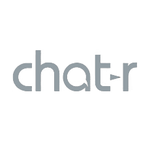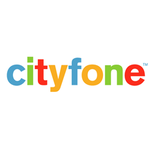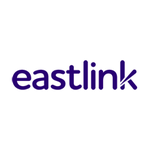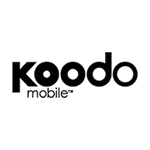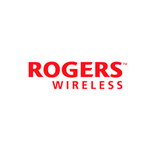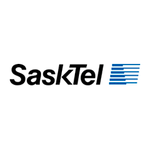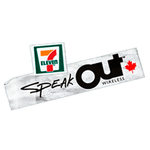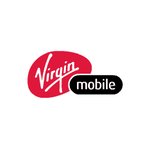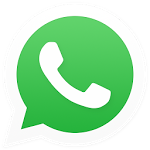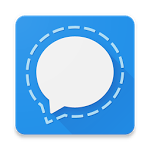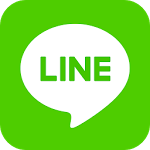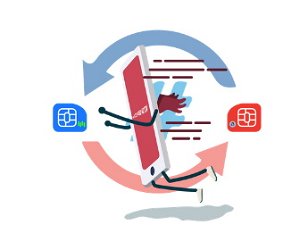
If you are planning to visit Canada either for work or vacation, you may be wondering about using your mobile phone during your stay.
While you could just use your existing provider’s roaming rates, the bill might cost you more than the trip itself.
So what about establishing phone service in Canada?
It’s certainly a cheaper option. But you’ll need to understand how Canada’s mobile phone service providers work and how to obtain service as a non-resident.
Then there’s finding a phone that works, a good plan, keeping your account topped off and avoiding excessive fees…
Don’t worry...this guide will tell you everything you need to know!
First… a Few Things You Should Know About Canada's Mobile Options
While your phone will function just as it has in other countries, there are a few characteristics of mobile phone plans in Canada to keep in mind you might not encounter at home.
There’s not much competition among Canadian service providers. This means prices are higher than in most other countries and there isn’t a lot of variety in plan features between providers.

You’ll need a Canadian bank account, Canadian address and an established credit history to get a monthly plan.
Because of this, monthly plans aren’t an option for most visitors or new arrivals. Instead, you’re left choosing from pricier prepaid plans .
While more Canadian service providers now offer Canada-wide calling, some of these cheaper prepaid plans only include calling within your province. Calls outside your local area result in increased fees.
If you’re planning to travel around the country—or don’t want to worry about where you’re calling from—be sure to grab a plan with Canada-wide calling.
The same applies to placing calls. Be sure your plan doesn’t charge roaming fees for calling away from your local area if you’re planning to travel.
Canada has lower data caps and higher data prices. This is probably the biggest difference you’ll notice compared to mobile service in other countries.
CBC News recently reported that Canada is among the most expensive mobile data countries in a 2016 Tefficient study.
If you’re used to binging on TV shows while on the go or surfing the Internet endlessly, get acquainted with the Wi-Fi options in your area.
Also, be sure your plan includes enough mobile data and check the terms of your prepaid agreement.
Some service providers throttle data if you use your allotment while others disable it completely.
Apart from these concerns, mobile services works as in most countries.
Will My Phone Work in Canada?
Planning to bring your phone along and use it in Canada? You’ll need to be sure it is compatible with Canada’s networks.
In a nutshell, mobile phones transmit your voice calls, messages and, mobile data using specific frequencies or bands. The exact bands used depend on the region you’re in and the network provider you’re using.
The bands supported by your phone will depend on both the model number and your carrier. If your phone doesn’t support all the bands in your area, you’ll get spotty service or no service at all.
This means that to use your own phone, you’ll need a phone that is both unlocked and supports Canadian frequencies.
In Canada, common mobile frequencies include:
- 2G: GSM 850, GSM 1900
- 3G: UMTS 850 (Band 5), UMTS 1700 (Band 4), UMTS 1900 (Band 2)
- 4G: LTE 1700 (Band 4), LTE 2600 (Band 7)
There are a few
different ways to check phone compatibility. You'll just need to know your phone's model number and the carrier you intend to use in Canada.
If your phone won't work in Canada, you can always pick up a phone locked to one of Canada’s service providers when you arrive or buy an unlocked phone upfront that supports the required frequencies.
Phone compatible with Canadian networks but locked to your existing carrier? You might be able to unlock it before heading out.
If you're stuck buying a new phone to use, you have different points to consider:
Unlocked phones will typically allow you to switch between providers if you’re not happy with the first one that you try. Plus, they'll work in other countries you travel to or when your visit or stay in Canada is over.
However, unlocked phones are more expensive than many of the basic prepaid options available.
Prepaid phones are often locked to a single provider or cellular network. Should you need to switch providers or use the phone in another country, there’s a good chance you’ll need to purchase another phone.
But, these phones are often more affordable. Sometimes they’re even bundled with prepaid plans for added savings.
In many ways, it’s all about budget and the length of your stay.
- Looking for the cheapest option or only staying for a short time? Go with a prepaid phone.
- Want advanced features, flexible options, traveling to multiple destinations or planning to stay a while? An unlocked phone is probably worth the upfront cost.
Regardless of which you choose, your phone will need to meet some basic network requirements.
For specific service providers, check the table below:
| Carrier | Network Frequencies/Bands | More Info |
|
|
Frequencies: 850, 1700, 1900, 2100 AWS 1, 2600
Bands: 2, 4, 5, 7 |
Bell Mobility
|
|
|
Frequencies: 850, 1700, 1900, 2100 AWS 1
Bands: 2, 4, 5 |
Bell MTS
|
|
|
Frequencies: 850, 1900 Bands: 2, 5 |
Chatr
|
|
|
Frequencies: 700, 850, 1700, 1900, 2100 AWS 1, 2600 Bands: 2, 4, 5, 7, 17 |
Cityfone
|
|
|
Frequencies: 850, 1700, 1900, 2100 AWS 1, 2600
|
Eastlink
|
|
|
Frequencies: 700, 850, 1700, 1900, 2100 AWS 1, 2600 Bands: 2, 4, 5, 7, 17 |
|
|
|
Frequencies: 1700, 2100 AWS 1 Bands: 4 |
Freedom Mobile
|
|
|
Frequencies: 850, 1700, 1900, 2100 AWS 1 Bands: 2, 4, 5 |
Koodo Mobile
|
|
|
Frequencies: 850, 1700, 1900, 2100 AWS 1, 2600 Bands: 2, 4, 5, 7 |
PC Mobile
|
|
|
Frequencies: 700, 850, 1700, 1900, 2100 AWS 1, 2600 Bands: 2, 4, 5, 7, 17 |
Petro-Canada
|
|
|
Frequencies: 700, 850, 1700, 1900, 2100 AWS 1, 2600 Bands: 2, 4, 5, 7, 17 |
Primus Mobile
|
|
|
Frequencies: 700, 850, 1700, 1900, 2100 AWS 1 Bands: 2, 4, 5 |
Public Mobile
|
|
|
Frequencies: 700, 850, 1700, 1900, 2100 AWS 1, 2600 Bands: 2, 4, 5, 7, 17 |
Rogers
|
|
|
Frequencies: 850, 1700, 1900, 2100 AWS 1 Bands: 2, 4, 5 |
SaskTel
|
|
|
Frequencies: 700, 850, 1700, 1900, 2100 AWS 1, 2600 Bands: 2, 4, 5, 7, 17 |
SpeakOut
|
|
|
Frequencies: 850, 1700, 1900, 2100 AWS 1 Bands: 2, 4, 5 |
Telus
|
|
|
Frequencies: 750, 1700, 2100 AWS 1 Bands: 4, 17
|
Videotron
|
|
|
Frequencies: 850, 1700, 1900, 2100 AWS 1, 2600 Bands: 2, 4, 5, 7 |
Virgin Mobile
|
If you’re planning to use mobile data to browse the web, you’ll want a phone capable of using 3G and 4G frequencies. While 2G offers enough bandwidth for calling and text messages, it doesn’t handle the media-heavy pages of the modern Internet well.
So before you go through the process of unlocking your phone (or buying an unlocked one) take a look at our phone summaries.
Find your model and click the Specs tab.
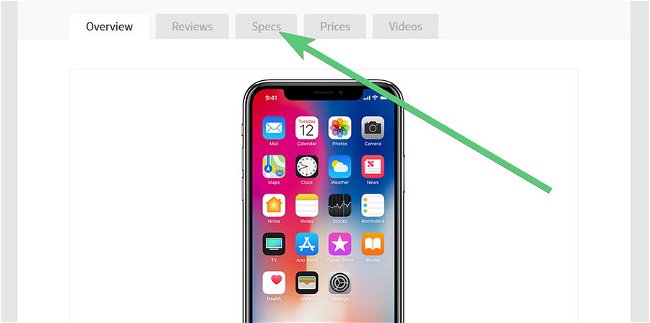
Locate the “Networks” section near the top of the list
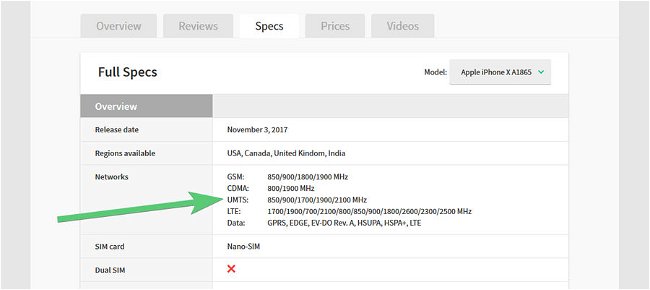
You’ll want to be sure that your phone supports the frequencies listed at the start of this section.
Things to Take Care of Before You Leave Home
Before you leave, you’ll want to contact your current mobile service provider.
They’ll be able to tell if your phone will work in Canada. Depending on company policies and local regulations, they might even be able to unlock it for you.
Also, check any roaming partners they might have in Canada. This will let you know your options without getting a Canadian plan or purchasing new hardware.
If you plan to use this service, be sure to ask about any additional fees. While many service providers cap roaming charges, this isn’t guaranteed. So knowing in advance will help avoid bill shock.
Should I Sign up for Service in Canada or Use My Existing SIM?
In most cases, it is worth the cost to pick up a prepaid or postpaid SIM in Canada.
However, there are a few exceptions…
- You’re only staying a day or two and won’t use your phone much
- Your existing provider offers a flat rate roaming plan cheaper than the prepaid plans offered in Canada
- You need to keep your existing number from home while you’re in Canada
- You’ll have Wi-Fi access for most of your stay and your existing provider supports Wi-Fi calling or you plan to use a VoIP app such as Skype or Facebook Messenger.
If you’ll be staying more than a week or two, there’s a good chance that you’ll find value in a Canadian service plan even if your existing provider offers a roaming package.
Why You Don't Want to Use Your Existing Mobile Plan
Unless your mobile service provider covers Canadian roaming in a flat-rate add-on, you’ll face added fees for each minute, megabyte or message you use away from Wi-Fi.
Using your monthly plan from home in Canada for more than a few days can lead to a nasty surprise when your next bill arrives. Especially if you’re a heavy phone user.
We’re talking hundreds and possibly thousands of dollars or pounds if you use a monthly plan…
If you’re using a prepaid or pay-as-you-go plan at home, your phone might not work at all when you arrive in Canada. Many prepaid service providers don’t have deals with networks in other countries to provide roaming service.
If you already have an unlocked phone--or buy a cheap prepaid phone to use while in Canada--you should probably pick up a SIM to use once you arrive.
You’ll enjoy the convenience of a mobile phone, but not worry as much about extra fees.
Getting Canadian Phone Service / SIM
Mobile service providers in Canada separate plans into two main categories: prepaid and postpaid.
Postpaid plans allow you to pay each month for an allotment of minutes, messages, data and other features.
While they tend to offer the best prices, they often require a contract and all require a credit check.
This means that service providers will want to verify a history of Canadian accounts and timely payments to ensure you’ll pay your bill. They’ll probably also require payment from a Canadian bank account or Canadian Debit Card to set up automatic payments.
A Canadian credit history, bank account, and address are tricky for someone just arriving in the country--let alone if you’re just visiting.
Even if they let you start service, you’ll face a hefty deposit for each line you want to activate...
For these reasons, we recommend sticking to a prepaid plan.
With these plans, you’ll pay in advance for credits or a bundle of minutes, messages and data.
While some providers won’t let you recharge or top-off your prepaid SIM online using a card from another country, you can often stop into the nearest gas station, retail store or carrier store and pick up a recharge card or add credits to your account.
You’ll pay a little more overall for service compared to postpaid plans...
But you’ll also avoid hefty deposits to establish service and long-term contracts that might bring additional fees should you need to cancel.
If you’ve never used a prepaid mobile plan before there are two options to choose from:
- Pay as you go (PAYG) credits
- Prepaid bundle plans
PAYG credits are more costly but feature longer expiration dates. You can also find top off cards for lower amounts than many prepaid bundles. If you’re only keeping a phone around for emergencies and light usage, they’re probably a better deal.
But if you want to use your phone like you would at home, a bundle plan will save you money. These plans allow you to pay in advance for a set allotment of minutes, messages, and data.
However, if you don’t use your allotment before the next billing cycle, you’ll lose any remaining amounts. Finding a good fit is essential to getting the most value out of a bundle plan.
In most cases, if you exceed your allotment, your phone will simply stop working. This makes it easy to avoid unexpected expenses but might leave you in a bind if you need to make a call and you’re out of credit.
Be sure to compare options and find a plan that fits your typical usage. If you’re not sure where to start, our plan comparison tool makes it easy to filter options by cost, minutes, data allowance and other considerations.
If you’re staying for an extended period or moving to Canada, you can transition to a monthly plan for added savings once you’ve established a history in the country.
When and Where Should You Buy Your Canadian SIM Card?
Most Canadian service providers will require a Canadian credit or debit card if purchasing online.
This can make purchasing a card in advance tricky. While you might be able to pick up a card on Craigslist, Kijiji or eBay and have it shipped, the cost to ship the card might outweigh the initial savings depending on where you’re located.
Also, if you receive a bad card or it doesn’t fit your phone, you don’t have many options for recovering your money.
In most cases, we recommend stopping by a store once you’ve arrived.
When possible, avoid purchasing a card at the airport or train terminal when you arrive. They’re almost always priced higher to take advantage of travellers who don’t know any better or have no other options.
If you’re not sure where to find a card for the network you plan to use, search our online store directory .
Our carrier summaries also include contact numbers to call or websites you can use to find the nearest location for a specific service provider.
Who Are the Best Canadian Cell Phone Service Providers?
There’s no single answer to this question…
It will depend on where you’re visiting and what you need from your mobile service plan.
Competition among mobile phone service providers in Canada is low. If you’re looking for service, there are only three major names available:
|
|
Rogers
|
|
|
Telus
|
|
|
However, in most cases, the prepaid plans offered directly through the major service providers aren’t the best deals...
Smaller prepaid service providers are often a better option.
You’ll pay less for your bundles or credits than you would from a larger service provider. But that doesn’t mean service is any different.
In fact, they’re almost all leasing network access (or even owned by) one of the “Big Three” listed above.
Examples of these service providers include:
|
|
Koodo (Uses the Telus Network)
|
|
|
Fido (Uses the Rogers Network)
|
|
|
PC Mobile (Uses the Bell & Telus Networks)
|
|
|
Petro-Canada (Uses the Rogers Network)
|
|
|
Public Mobile (Uses the Telus Network)
|
|
|
SpeakOut (Uses the Rogers Network)
|
|
|
Virgin Mobile (Uses the Bell Network)
|
There are also a few regional service providers that offer cheaper service in specific areas:
|
|
Bell MTS (Manitoba)
|
|
|
SaskTel (Saskatchewan)
|
|
|
Videotron (Quebec)
|
These service providers tend to offer the best rates around for local use, but might be more expensive if you’re planning to visit multiple provinces and explore the country.
What's the Best Deal / Plan?
This one gets a bit complicated…
There’s a number of considerations:
- How long are you staying?
- Do you have a phone already?
- What's your budget?
- How do you use your phone?
Each answer will change your ideal options.
Our phone comparison tool is the best way to compare options. However, these general guidelines should help you start your search on the right foot.
If you’re planning on a short visit--such as a family holiday or business conference--your best option is a prepaid plan.
Consider these carriers:
If you’re planning a longer stay--such as a permanent move or studying abroad--a monthly plan will offer savings. However, be sure to check that contract terms match the term of your stay. Otherwise, you might be surprised with hefty fees should you decide to leave the country again and need to cancel your service before your contract is complete.
Consider these carriers:
|
|
|
|
If you’re staying in or near one of Canada’s major cities, you might also consider Freedom Mobile. While their coverage in remote parts of the country isn’t stellar, they offer prices cheaper than the big three with decent coverage in metropolitan regions.
As we mentioned above, the amount of time you plan to stay is only part of the picture. Be sure to factor in other cost considerations and needs.
For example, if you already own a phone that you can use with Canadian carriers, your options for service without contracts (SIM-only or Pay-as-you-go service) increase substantially. You can find the best prices for your data, text, and calling needs using our comparison tool.
Likewise, if you’re a light phone user, don’t require much data, or simply want a mobile phone for emergencies, you might find that a prepaid plan works well regardless of the amount of time you plan to stay.
The most important things to consider are contract obligations, feature allotments, and overall price.
Use Wi-Fi To Save
If you're visiting or staying in a major city--or better still at a major university--there’s a good chance that you’ll find Wi-Fi hotspots and coverage nearby.
You can use Wi-Fi to make calls, send messages and even video chat with friends and family back home as long as you know the right apps to use. Some phones even support Wi-Fi calling natively.
This can greatly reduce usage of expensive plans or, in some cases, replace the need for a phone plan completely.
If you choose to use Wi-Fi instead of a traditional service provider, you won’t have a dedicated phone number and you won’t be able to send or receive calls or messages outside of Wi-Fi coverage areas. And in most cases, you’ll also need your friends and family to use the same apps you’re using to communicate.
However, if you’re on a budget, being able to use your phone for free might be worth the hassle.
Popular options include:
|
|
Skype Download from:
|
|
|
Google Hangouts
|
|
|
Facebook Messenger
|
|
|
WhatsApp
|
|
|
Signal
|
|
|
Line
|
But what if you want a Canadian number?
It’s still possible to enjoy the convenience of a number with the savings of Wi-Fi calling--even if your phone doesn’t natively support the feature.
However, you’ll need to use an app to claim and use the number.
You’ll also still face the same restrictions as the apps listed above. If you don’t have a strong Wi-Fi signal, calls to your number will go straight to voicemail and messages won’t be delivered until you’re back in Wi-Fi range.
Options include:
|
|
Fongo
|
|
|
TextNow
|
Both apps will assign a Canadian number to your app, allow free calls and texts and include Canada-wide calling.
You’ll also find international calls to friends and family back home are likely cheaper than prepaid rates.
It’s a little more complex than simply using a VoIP app, but provides a more phone-like experience.
Other Stuff You Should Know
Outside of finding a phone that works in Canada and adding a plan, there are a few other things that might make using your phone service a little easier...
Local Terminology:
- Carrier: This is the company providing phone service. Also known as a network in the UK and EU.
- Cell Phone: What we Canadians call a mobile phone or smartphone.
- Top Up: A refill or recharge of your prepaid account.
- Credit Check: A report that carriers make using Canadian credit bureaus to determine if you qualify for a monthly plan, what deposits you might pay and any phone financing or discounts available.
Important Numbers:
- Emergency Assistance (Ambulance, Fire or Police): 911
- Directory Assistance (May Require a Fee): 411
- Municipal Services and Non-Emergency Assistance (Only Available in Select Areas): 311
Additional Travel Resources:
- 17 Canada Travel Tips That Might Save Your Life
- Parks Canada
- The Canadian Encyclopedia
- Travel and Tourism - Government of Canada
- Lonely Planet: Canada
Final Thoughts
Using your mobile phone in Canada isn’t much different than using it anywhere else in the world. But choosing the right service is essential to avoiding expensive bills.
Basic requirements include:
- An unlocked phone or prepaid phone with support for Canadian networks
- A prepaid SIM
- Access to a physical location to top off your credits
We hope this guide helps you save money and enjoy your time in Canada to the fullest. If you have any further questions, be sure to check out our Q&A forums or leave a comment below.
P.S. Once you’ve established a credit profile or establish a permanent residence in Canada, switching to a monthly plan might offer additional flexibility—particularly if you’re a heavy phone user. When the time comes, our
plan comparison tool
makes it easy to check out the various options and find a plan that beats what your prepaid card might offer.


